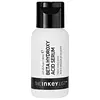What's inside
What's inside
 Key Ingredients
Key Ingredients

 Benefits
Benefits

 Concerns
Concerns

 Ingredients Side-by-side
Ingredients Side-by-side

Water
Skin ConditioningGlycerin
HumectantNiacinamide
Smoothing1,2-Hexanediol
Skin ConditioningPolyglyceryl-10 Laurate
Skin ConditioningGluconolactone
Skin ConditioningGlyceryl Caprylate
EmollientCeramide NP
Skin ConditioningCholesterol
EmollientCaprylic/Capric Triglyceride
MaskingPhytosphingosine
Skin ConditioningStearic Acid
CleansingOleic Acid
EmollientZinc Lactate
Hydrogenated Lecithin
EmulsifyingEthylhexylglycerin
Skin ConditioningSodium Hyaluronate
HumectantTanacetum Annuum Flower Oil
MaskingHydroxyethylcellulose
Emulsion StabilisingAmmonium Acryloyldimethyltaurate/Vp Copolymer
Glyceryl Acrylate/Acrylic Acid Copolymer
HumectantSodium Phytate
Tocopherol
AntioxidantLactic Acid
BufferingCaprylyl Glycol
EmollientCaprylhydroxamic Acid
Water, Glycerin, Niacinamide, 1,2-Hexanediol, Polyglyceryl-10 Laurate, Gluconolactone, Glyceryl Caprylate, Ceramide NP, Cholesterol, Caprylic/Capric Triglyceride, Phytosphingosine, Stearic Acid, Oleic Acid, Zinc Lactate, Hydrogenated Lecithin, Ethylhexylglycerin, Sodium Hyaluronate, Tanacetum Annuum Flower Oil, Hydroxyethylcellulose, Ammonium Acryloyldimethyltaurate/Vp Copolymer, Glyceryl Acrylate/Acrylic Acid Copolymer, Sodium Phytate, Tocopherol, Lactic Acid, Caprylyl Glycol, Caprylhydroxamic Acid
 Reviews
Reviews

Ingredients Explained
These ingredients are found in both products.
Ingredients higher up in an ingredient list are typically present in a larger amount.
Ethylhexylglycerin (we can't pronounce this either) is commonly used as a preservative and skin softener. It is derived from glyceryl.
You might see Ethylhexylglycerin often paired with other preservatives such as phenoxyethanol. Ethylhexylglycerin has been found to increase the effectiveness of these other preservatives.
Hydroxyethylcellulose is used to improve the texture of products. It is created from a chemical reaction involving ethylene oxide and alkali-cellulose. Cellulose is a sugar found in plant cell walls and help give plants structure.
This ingredient helps stabilize products by preventing ingredients from separating. It can also help thicken the texture of a product.
This ingredient can also be found in pill medicines to help our bodies digest other ingredients.
Learn more about HydroxyethylcelluloseSodium Hyaluronate is hyaluronic acid's salt form. It is commonly derived from the sodium salt of hyaluronic acid.
Like hyaluronic acid, it is great at holding water and acts as a humectant. This makes it a great skin hydrating ingredient.
Sodium Hyaluronate is naturally occurring in our bodies and is mostly found in eye fluid and joints.
These are some other common types of Hyaluronic Acid:
Learn more about Sodium HyaluronateWater. It's the most common cosmetic ingredient of all. You'll usually see it at the top of ingredient lists, meaning that it makes up the largest part of the product.
So why is it so popular? Water most often acts as a solvent - this means that it helps dissolve other ingredients into the formulation.
You'll also recognize water as that liquid we all need to stay alive. If you see this, drink a glass of water. Stay hydrated!
Learn more about Water